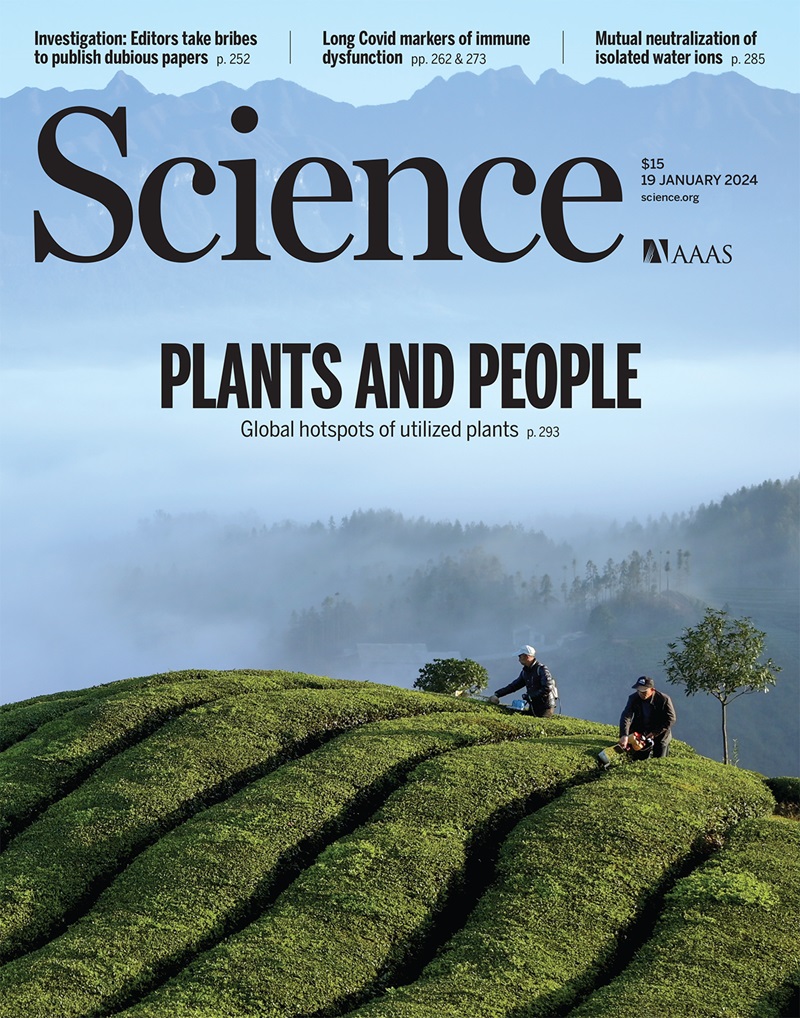Global importance of nitrogen fixation across inland and coastal waters
IF 44.7
1区 综合性期刊
Q1 MULTIDISCIPLINARY SCIENCES
Science
Pub Date : 2025-06-12
引用次数: 0
Abstract
Biological nitrogen fixation is a key driver of global primary production and climate. Decades of effort have repeatedly updated nitrogen fixation estimates for terrestrial and open ocean systems, yet other aquatic systems in between have largely been ignored. Here we present an evaluation of nitrogen fixation for inland and coastal waters. We demonstrate that water column and sediment nitrogen fixation is ubiquitous across these diverse aquatic habitats, with rates ranging six orders of magnitude. We conservatively estimate that, despite accounting for less than 10% of the global surface area, inland and coastal aquatic systems fix 40 (30 to 54) teragrams of nitrogen per year, equivalent to 15% of the nitrogen fixed on land and in the open ocean. Inland systems contribute more than half of this biological nitrogen fixation.
内陆和沿海水域固氮的全球重要性
生物固氮是全球初级生产和气候的关键驱动力。几十年的努力已经反复更新了陆地和开放海洋系统的固氮估计,但两者之间的其他水生系统在很大程度上被忽视了。在这里,我们提出了对内陆和沿海水域固氮的评价。我们证明了水柱和沉积物固氮在这些不同的水生栖息地中无处不在,其速率范围为6个数量级。我们保守估计,尽管内陆和沿海水生系统占全球表面积的不到10%,但每年固定40(30至54)太克氮,相当于陆地和开阔海洋固定氮的15%。内陆系统贡献了一半以上的生物固氮作用。
本文章由计算机程序翻译,如有差异,请以英文原文为准。
求助全文
约1分钟内获得全文
求助全文
来源期刊

Science
综合性期刊-综合性期刊
CiteScore
61.10
自引率
0.90%
发文量
0
审稿时长
2.1 months
期刊介绍:
Science is a leading outlet for scientific news, commentary, and cutting-edge research. Through its print and online incarnations, Science reaches an estimated worldwide readership of more than one million. Science’s authorship is global too, and its articles consistently rank among the world's most cited research.
Science serves as a forum for discussion of important issues related to the advancement of science by publishing material on which a consensus has been reached as well as including the presentation of minority or conflicting points of view. Accordingly, all articles published in Science—including editorials, news and comment, and book reviews—are signed and reflect the individual views of the authors and not official points of view adopted by AAAS or the institutions with which the authors are affiliated.
Science seeks to publish those papers that are most influential in their fields or across fields and that will significantly advance scientific understanding. Selected papers should present novel and broadly important data, syntheses, or concepts. They should merit recognition by the wider scientific community and general public provided by publication in Science, beyond that provided by specialty journals. Science welcomes submissions from all fields of science and from any source. The editors are committed to the prompt evaluation and publication of submitted papers while upholding high standards that support reproducibility of published research. Science is published weekly; selected papers are published online ahead of print.
 求助内容:
求助内容: 应助结果提醒方式:
应助结果提醒方式:


